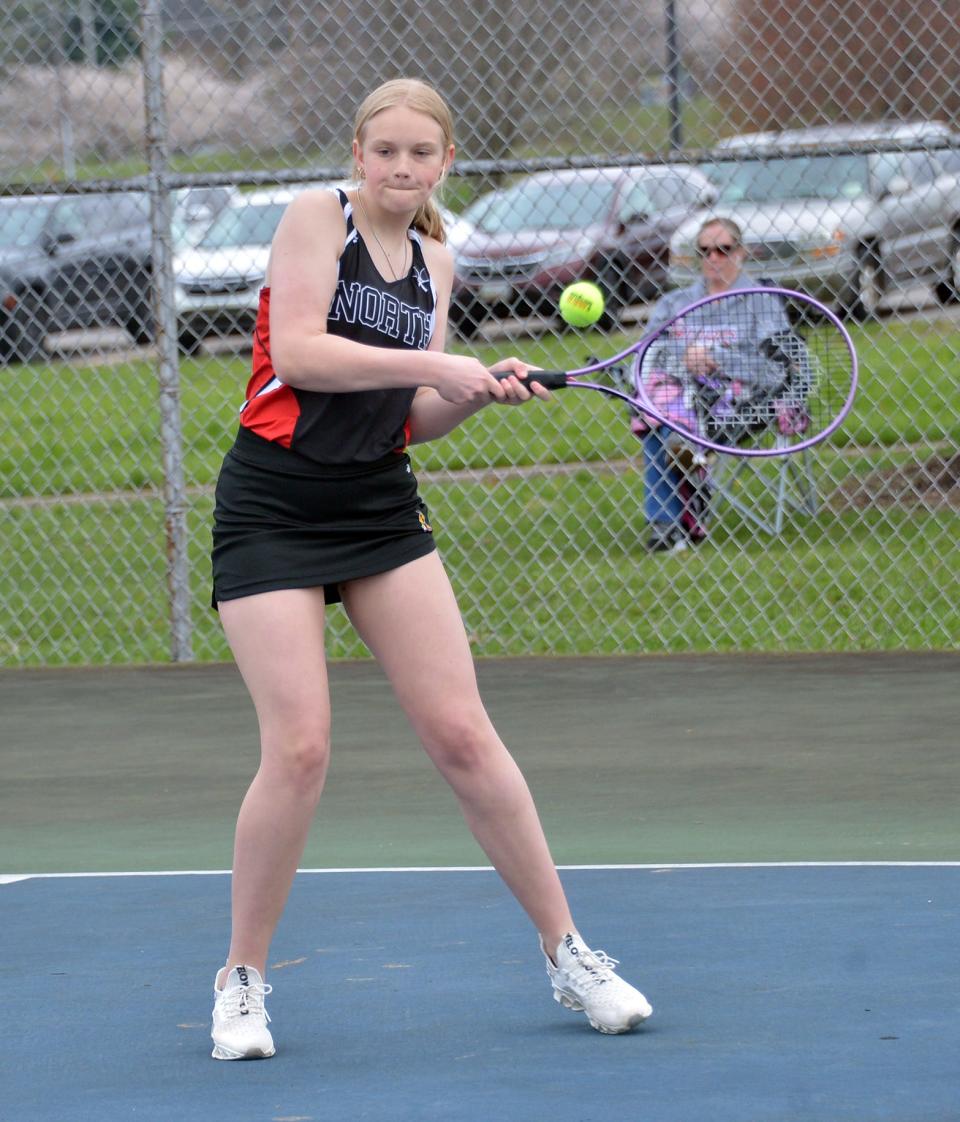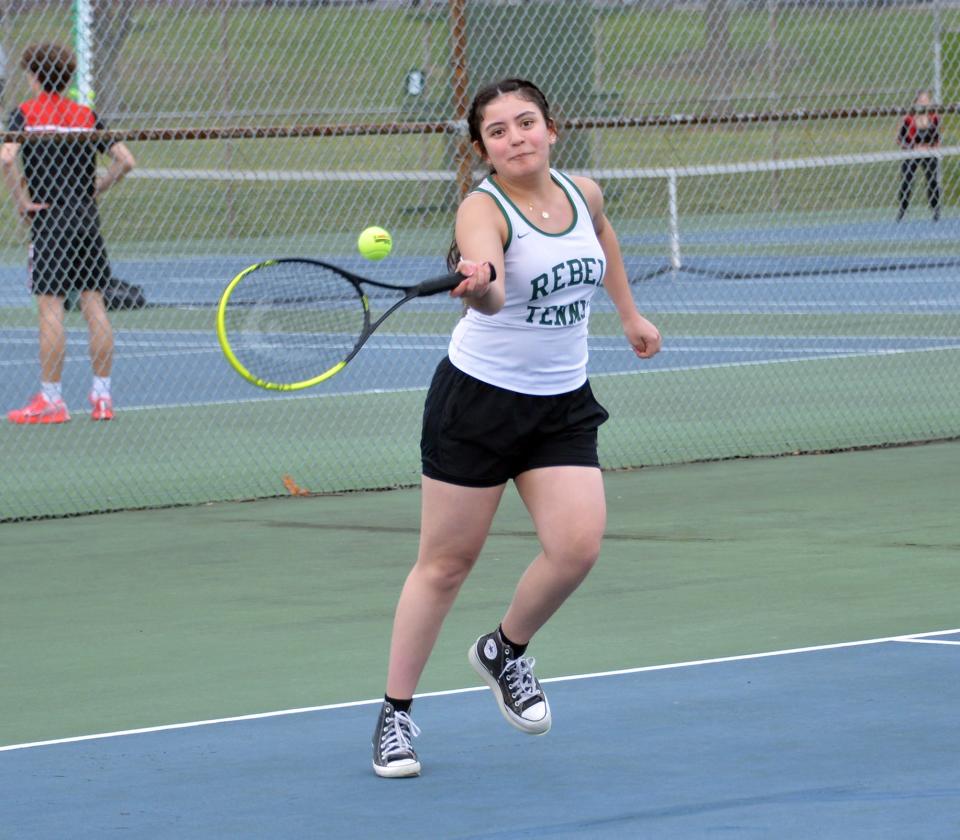Tennis coaches take different approaches to figuring out doubles lineups
Baseball and softball coaches are not the only spring skippers regularly scratching their skulls trying to figure out a lineup card.
It's a brain game in tennis, too — especially when it comes to doubles.
In Maryland public-school tennis, team scores consist of two singles matches and three doubles matches, meaning 60% of the outcome is decided in doubles play. So while first singles — which is typically where the strongest players show their stuff — gets most of the spotlight, just as often the third doubles match — with the last two players in a team's lineup — can decide the team result.
"Third doubles, a lot of times it's just consistency," said South Hagerstown coach Jason Kamler. "If you can find a team that's consistent together, keeps the ball in the court and plays smart tennis, you don't need anything flashy down there, it's just about consistency."

The Rebels hosted city rival North Hagerstown on Monday and came away with a pair of victories, 4-1 in the girls match and 3-2 in the boys match.
The Hubs' and Rebels' girls teams entered the early season showdown with matching 2-0 records. So did their No. 1 doubles teams, a pair of experienced units that battled into a 10-point tiebreaker. South's Riley Troxell and Lindsay Rasco edged North's Sofia Galvan and Emily Gasaway, 4-6, 6-2, 10-7.
Troxell went 21-4 and Rasco finished 10-3 in doubles matches in 2023. Galvan and Gasaway teamed 16 times last year, going 13-3.
Simply the best: Penn State’s Aaron Brooks wins the Hodge Trophy, college wrestling’s Heisman
Washington County football: Our 'way too early' list of 2024 players to watch
Having returning experience like that in a doubles lineup is the exception rather than the norm, and a luxury for coaches. Often, experienced doubles players move up the ladder to singles play as they become upperclassmen, leaving coaches to juggle the doubles lineups.
Hubs coach Uriel Galvan prefers to set his doubles teams early and let them play together for the duration of the season, possibly moving up or down the lineup as a unit based on practice challenge match results.
"In our case, where we only have a couple of tennis players playing year-round, it's just a matter of who's in your top eight (players) and then grouping them accordingly in the ladder order," Galvan said. "I just go straight down the ladder and keep (the doubles teams) together. After that, it's up to them to challenge each other. ... We'd rather just practice with the kids (in their teams) and work on things we can improve, rather than try to find different alternatives."

The Rebels, on the other hand, mix and match their teams much more frequently. South has fielded different teams in each of the boys' three doubles spots, as well as the girls' third doubles spot, in each of its three matches so far.
The myriad ways of strategically combining players can be dizzying. Do you try to pair a righty and a lefty? Merge a strong net player with a strong baseliner or server? Perhaps go all-in on a pair of attacking net-rushers?
Or the pairing can have less to do with physical talents and more to do with personalities and temperaments.
"You're just trying to find teams that can compliment each other," Kamler said. "Sometimes, it's just personalities. Sometimes, it's different styles of games. You just want to find two players who play well together. ... Sometimes, you're looking for a veteran with a younger player, somebody who's kind of the steadying force out there.
"Sometimes you think you have that figured out early in the season, but it does take some experimenting to try to figure it out as you go. ... We've already had to mix and match after the first couple matches because we're seeing some things that we think will compliment other players."
This article originally appeared on The Herald-Mail: Tennis coaches take different approaches to their doubles lineups

